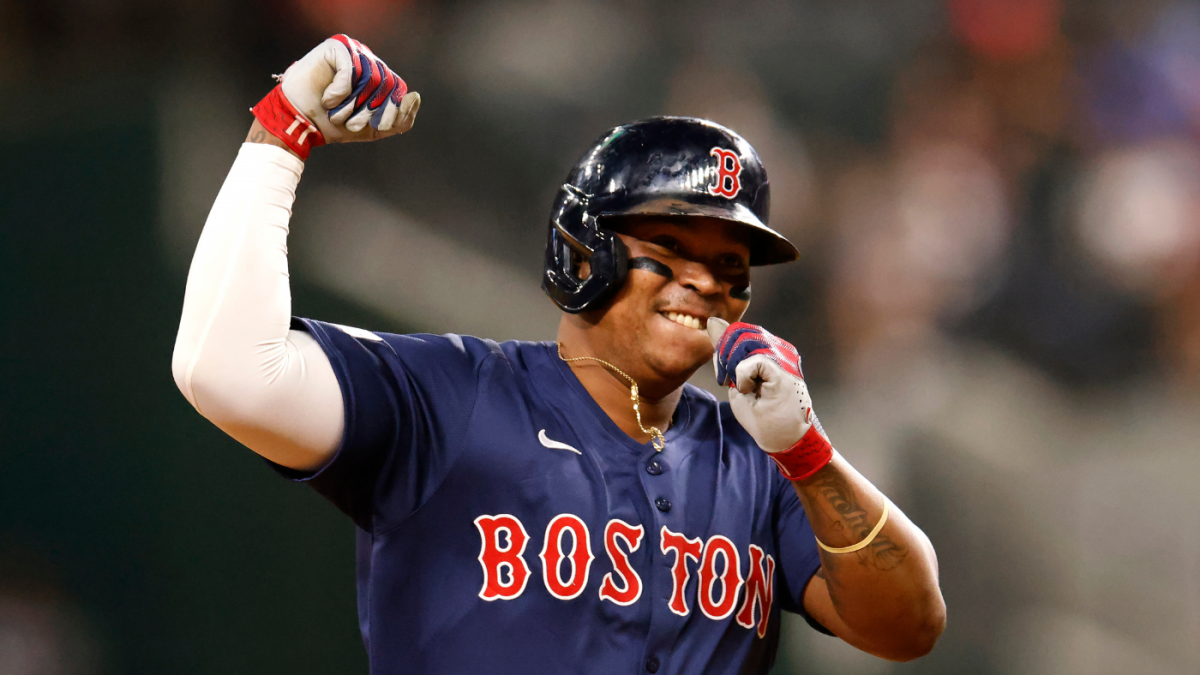The Devers Shift: A New Chapter with the Giants
The baseball world is abuzz with the recent trade of Rafael Devers from the Boston Red Sox to the San Francisco Giants. This mid-season blockbuster is more than just a swap of players; it’s a story of positional disputes, shifting attitudes, and a player’s surprising adaptability. Let’s delve into the circumstances surrounding the trade, Devers’ evolving stance on playing different positions, and the potential impact of this move on both franchises.
The Seeds of Discontent: Boston’s Positional Standoff
The trade didn’t happen overnight. It was the culmination of a growing tension between Devers and the Red Sox front office, primarily centered around his position. The Red Sox wanted to enhance their defensive flexibility and approached Devers about moving from third base to first base. Devers, however, was resistant, feeling undervalued and disrespected. His refusal to even consider the move, symbolized by “putting away his glove,” highlighted the disconnect between his aspirations and the team’s needs.
The situation worsened with the Red Sox’s signing of Alex Bregman, a move Devers reportedly resented. This added to the underlying issue of front office decision-making that Devers seemed to disagree with. The emotional weight of losing a key player was evident in Red Sox manager Alex Cora’s one-word reaction to the trade on Instagram. The departure of Devers marked the end of a difficult chapter for both the player and the team.
A Dramatic Turn: Devers Embraces Flexibility with the Giants
Upon joining the Giants, Devers’ attitude underwent a striking transformation. Unlike his stance in Boston, Devers immediately signaled his willingness to play wherever the Giants needed him. His introductory press conference was filled with assurances of his adaptability, repeatedly stating, “I’ll play wherever you want me to play, I’ll hit wherever you want me to hit.” This shift was noted by many, highlighting the difference in his approach.
Giants manager Bob Melvin confirmed the team’s intention to utilize Devers at both designated hitter and first base, showcasing their confidence in his versatility. Devers’ team-first mentality, emphasizing “the team” as the guiding force, was praised as a sign of leadership. The change in environment seems to have unlocked a level of cooperation previously unseen in Boston.
Why the Change? Understanding Devers’ Motivation
Several factors likely contributed to Devers’ dramatic change in attitude. Firstly, a fresh start can be incredibly liberating for a player. Leaving behind a contentious situation and joining a team that openly welcomes his skills, regardless of position, can foster a more positive mindset. Devers’ comments suggest a respect for the Giants’ leadership, indicating a willingness to defer to their judgment and contribute to their overall strategy. This contrasts with his apparent frustration with the Red Sox front office.
Additionally, the trade itself may have served as a catalyst. Once the decision to move was made, Devers likely recognized the need to embrace his new environment and demonstrate his value to the Giants. His willingness to adapt could be a strategic move to solidify his position and contribute to the team’s success.
Impact and Outlook: What This Means for Both Teams
The trade has significant implications for both the Red Sox and the Giants. For Boston, the move alleviates a potentially disruptive clubhouse presence and frees up financial flexibility. While losing a star player like Devers is a blow, the Red Sox seemingly prioritized resolving the internal conflict and avoiding further drama. The trade grade given by some analysts reflects this, acknowledging the escape from a difficult situation, even if it meant sacrificing a top-tier talent.
For the Giants, acquiring Devers represents a bold swing for contention. He instantly upgrades their lineup, adding a potent offensive threat and a proven run producer. The team is already exploring potential pairings with other players, suggesting an ambition to build a formidable roster. However, the success of the trade hinges on effectively integrating Devers into the lineup and finding the optimal defensive position for him.
Oracle Park, the Giants’ home stadium, presents a new challenge for Devers, and fantasy baseball analysts are already considering the potential impact of the park factors on his performance. Despite these uncertainties, the Giants are optimistic that Devers will provide a significant boost to their playoff aspirations.
The Future is Bright
Rafael Devers’ trade to the San Francisco Giants is more than just a player exchange; it’s a story of conflict, adaptation, and opportunity. His willingness to embrace a flexible role with his new team marks a significant shift in his approach and suggests a desire to move forward from the drama in Boston. Whether he thrives at first base, designated hitter, or a combination of both, Devers has the chance to reinvent himself and solidify his legacy as one of the game’s premier sluggers. The Giants, in turn, have acquired a potential cornerstone player who could lead them to contention for years to come. This trade serves as a compelling reminder that sometimes, a change of scenery is all it takes to unlock a player’s full potential. The future looks bright for both Devers and the Giants, and baseball fans everywhere will be watching to see how this new chapter unfolds.











